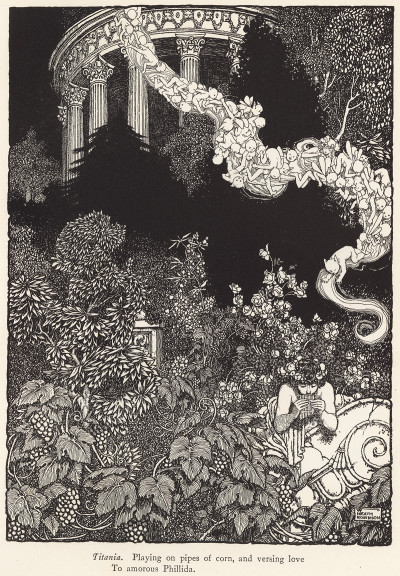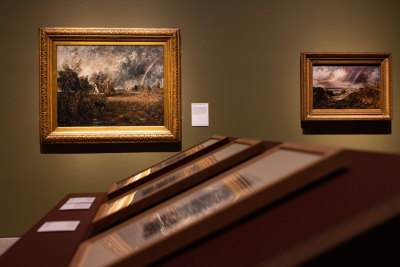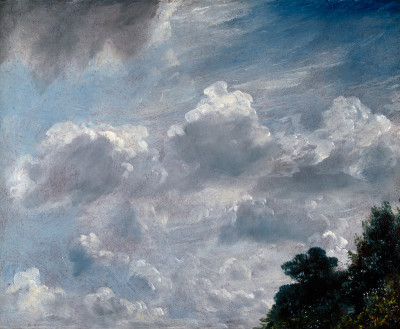Artist of the month: April 2016
Artist of the month: April 2016
William Heath Robinson (1872 – 1944)
By Amanda-Jane Doran
Published 1 April 2016
William Heath Robinson was an illustrator of enormous range and charm. As the RA Library Print Room presents his evocative book illustrations, curator Amanda-Jane Doran takes a look at his life and work.
-
William Heath Robinson (1872–1944) is one of the most celebrated graphic artists of the 20th century. Associated in the popular imagination with bizarre and ornate contraptions, “the gadget man” was academically trained as a painter at the Royal Academy Schools from 1892 to 1897. He began making magazine illustrations while still a student in order to contribute towards family finances; he had been studying art full time since the age of 15 and dreamed of becoming a landscape painter.
Thomas (1838–1902) was a well known news illustrator of dramatic, factual events. His brother, Charles, and their father, another Thomas (1806–85), had been wood engravers. The wood engraving technological revolution had emerged from the North East of England at the end of the eighteenth century, pioneered by Thomas Bewick, the inspirational artist, engraver and teacher. Thomas Robinson senior had known Bewick and bound books for him before he switched trade, trained as an engraver and headed South to London. The dynamic relationship between artist and wood engraver transformed the visual content of books and magazines in the nineteenth century and William Heath Robinson’s earliest work was influenced by this tradition. It was in his blood.
-

William Heath Robinson, There are land-babies then why not water-babies?, illustration for The water-babies by Charles Kingsley, London, 1915.

William Heath Robinson, Professor Ptthmllnsprts, illustration for The water-babies by Charles Kingsley, London 1915, 1915.
-
Heath Robinson’s two elder brothers Tom and Charles were already established as successful book illustrators by the late 1890’s. Charles studied at the RA Schools(/the-ra-schools) alongside his brother for two years, and in 1898 four of his designs, including illustrations for King Longbeard (1898, Bodley Head) were displayed in the Black and White Room at Burlington House.
The distinctive cross-hatched engraved effects of Victorian illustration were giving way to another revolution in the 1890’s, epitomised by the work of Aubrey Beardsley and his followers, including Charles Robinson. The zinc line block had been developed alongside photography to reproduce an artist’s drawing without the need for the additional interpretation of an engraver. A line drawing could be reproduced in its apparent purity and spontaneity, balanced with blocks of flat tone and often decorative, organic borders. Charles Robinson embraced the style wholeheartedly and was a major influence on his brother’s artistic development. William Heath Robinson’s first mature and extensive commission, designs for Poe’s Poems, published by Bell in 1900, display his debt to Beardsley and the Japanese wood block artists of the ukiyo-e. The emotional engagement, sinister and supernatural here, announces the arrival of a distinctive artistic personality. He made designs for the whole book: its binding, title page lettering and illustrations; it is among the exhibits in [Life of Line, a celebration of William Heath Robinson’s finest early book illustration](/exhibition/william-heath-robinson-life-on-line) currently on show in the Royal Academy Print Room.
Substantial commissions followed, drawings for the Works of Rabelais and Don Quixote. Heath Robinson was also branching out, creating his own stories embellished with drawings and leavened with a unique and surreal humour. The Adventures of Uncle Lubin, (Grant Richards, 1902,) heralded the arrival of Heath Robinson’s “strange little genius”, a child-minding relative of Quixote, constantly getting into bizarre scrapes, whose impulse was always benevolent. Uncle Lubin was the first of Heath Robinson’s creations to be occupied with contraptions, including a home made submarine.
-

William Heath Robinson, The first thing which Tom saw was the black cedars, illustration for The water-babies by Charles Kingsley, London, 1912.

William Heath Robinson, Titania, illustration to Shakespeare’s Comedy of a Midsummer night’s dream, London, 1914.
-
Heath Robinson was married in 1903 to Josephine Latey. Her father, John Latey (1842–1902), had been a colleague of Thomas Robinson on the Penny Illustrated Paper, later he became editor of The Sketch. This illustrated magazine published many of Heath Robinson’s best known cartoons, beginning with The Gentle Art of Catching Things in 1906. As Heath Robinson’s own family increased he wrote and illustrated more fanciful tales featuring hordes of unruly, irresistible infants at odds with the elements of air and water. Heath Robinson’s own Bill the Minder (1912) and The Water Babies by Charles Kingsley (1915) feature some of his most beautiful line drawings and delicate watercolours. They form the core of the display at the RA Print Room and show his mastery of line from tiny vignettes to beautifully balanced full page illustrations.
For over a decade, Heath Robinson cultivated both strands of his career as illustrator and cartoonist. The machines proliferated with the outbreak of World War I. His home-made contraptions had their own internal logic. They were constructed of identifiable, commonly recycled components: bits of string, planks of wood, metal wheels and springs, supervised by an innocent operator, like a silent film scenario. In the face of industrialised warfare the human scale of the gadgets became infinitely touching and humorous. Many soldiers sent Heath Robinson suggestions for machines from the trenches and he visited the Front in 1918, the only foreign journey of his life. His wartime drawings poke gentle fun at the enemy and never descend to vitriol or xenophobia.
Our exhibition focusses on Heath Robinson’s lesser known early book illustrations including a number for Uncle Lubin and the The Water Babies. Rare volumes from the Illustrated Book Collection of the RA Library are displayed, as well as graphic work published between 1902 and 1941. All are as beautiful as they are ingenious.
Amanda-Jane Doran is curator of William Heath Robinson’s Life of Line, in the RA Library Print Room until 3 June.
The works displayed are kindly on loan from the William Heath Robinson Trust (WHRT). A project to establish a permeanant home to house the WHRT collection is currently underway. Find out more about the William Heath Robinson Museum.
April’s Object of the month is Yinka Shonibare’s Cheeky Little Astronomer (2013). Read more from the RA Collection.







